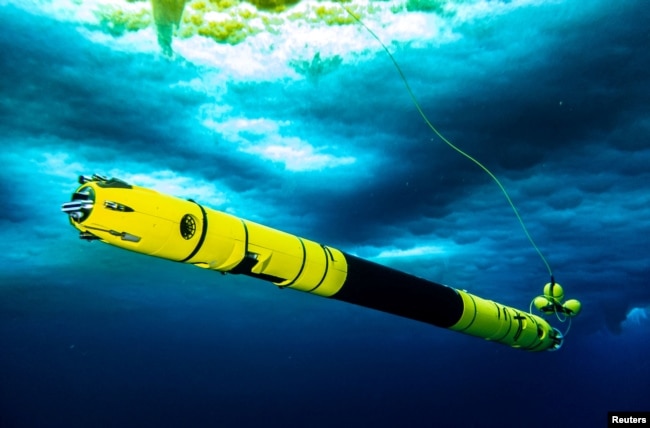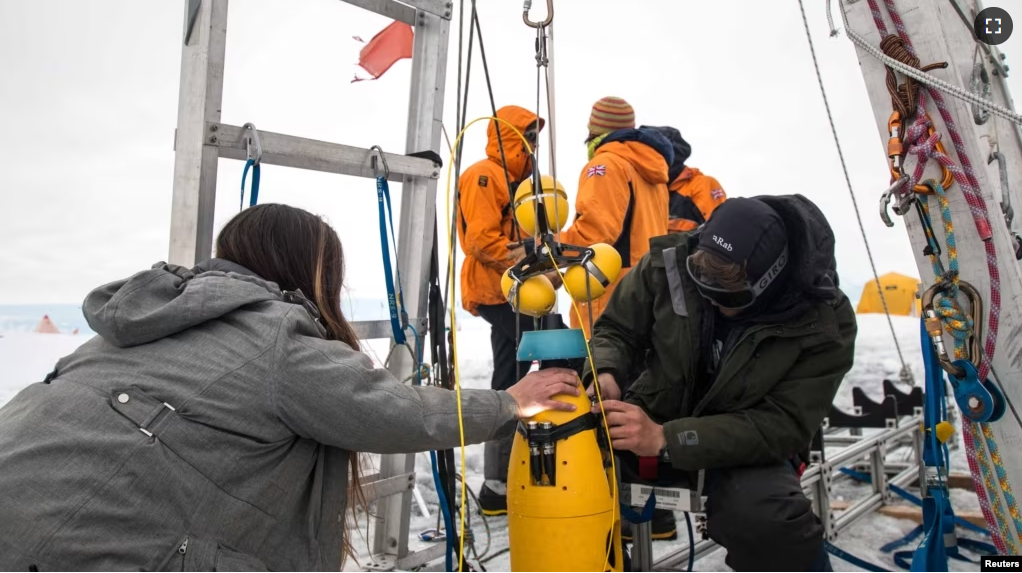In two recent studies, researchers say warm water is melting weak areas on Antarctica’s huge Thwaites Glacier.
Two research papers describing melting recently appeared in the publication Nature.
The research results came after an investigative effort involving a team of 13 American and British scientists. Teams spent about six weeks on the glacier in late 2019 and early 2020.
The researchers used an underwater robot vehicle equipped with instruments and sensors to collect data. They were able to measure the glacier’s grounding line, the place where glacial ice stops being supported by land and starts being supported by water.
One of the papers was led by Cornell University-based scientist Britney Schmidt. She reported the warmer water was making its way into crevasses and other openings known as terraces, which caused sideways melt of 30 meters or more per year.

“Warm water is getting into the weakest parts of the glacier and making it worse,” Schmidt told Reuters news agency.
“That is the kind of thing we should all be very concerned about,” she said about the latest findings.
Schmidt’s paper said the collapse of the Thwaites Glacier “represents more than half a meter of global sea-level-rise.” It could also influence events leading to a three-meter rise in the sea levels over several hundred years.
Schmidt also worked on the other paper’s findings. That research showed about five meters per year of melt near the glacier’s grounding line. This level was less than what the most aggressive thinning scientific potential models had predicted.
But Schmidt said the melting was still extremely concerning. “If we observe less melting…that doesn’t change the fact that it’s retreating,” she added.

In the past, scientists have depended on satellite images to show the behavior of the ice, making it difficult to get detailed results.
The papers represent the first time a team has gone to the grounding line of a major glacier, providing a look into where “the action begins,” Schmidt said.
The findings should help with the development of climate change models, said Paul Cutler. He is the program director of Antarctic Sciences at the National Science Foundation. He examined the papers, but was not involved in the research.
“These things can now be taken on board in the models that will predict the future behavior,” Cutler said. “And that was exactly the goal of this work,” he added.
I’m Bryan Lynn.
Reuters reported on this story. Bryan Lynn adapted the report for VOA Learning English.
___________________________________________________________________
Words in This Story
glacier – n. a very large area of ice that moves slowly down a slope or valley or over a wide area of land
crevasse – n. a deep, wide crack, especially in ice
potential –n. the chance or possibility that something could happen
retreat – v. to go away to a place or situation that is safer or quieter
